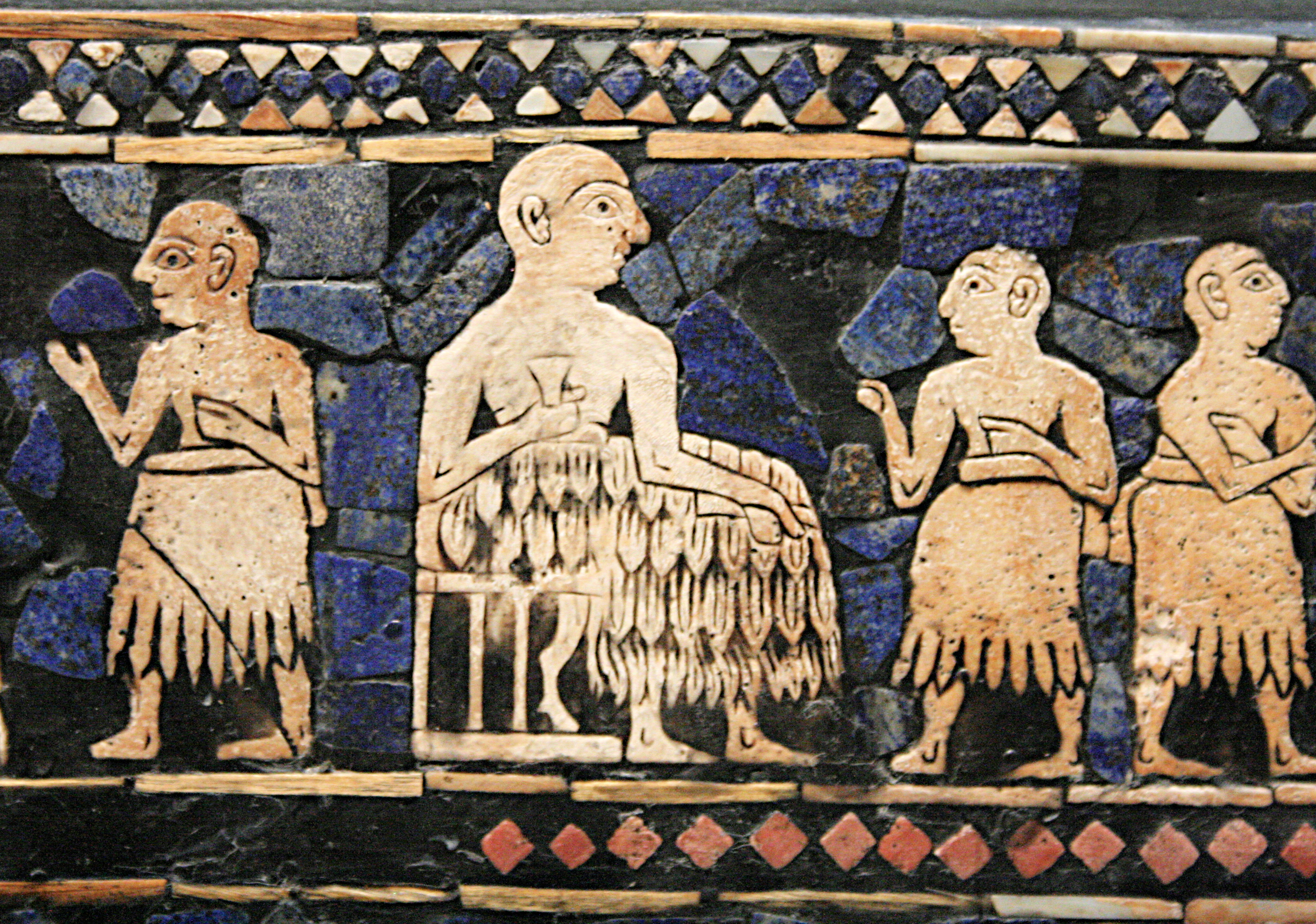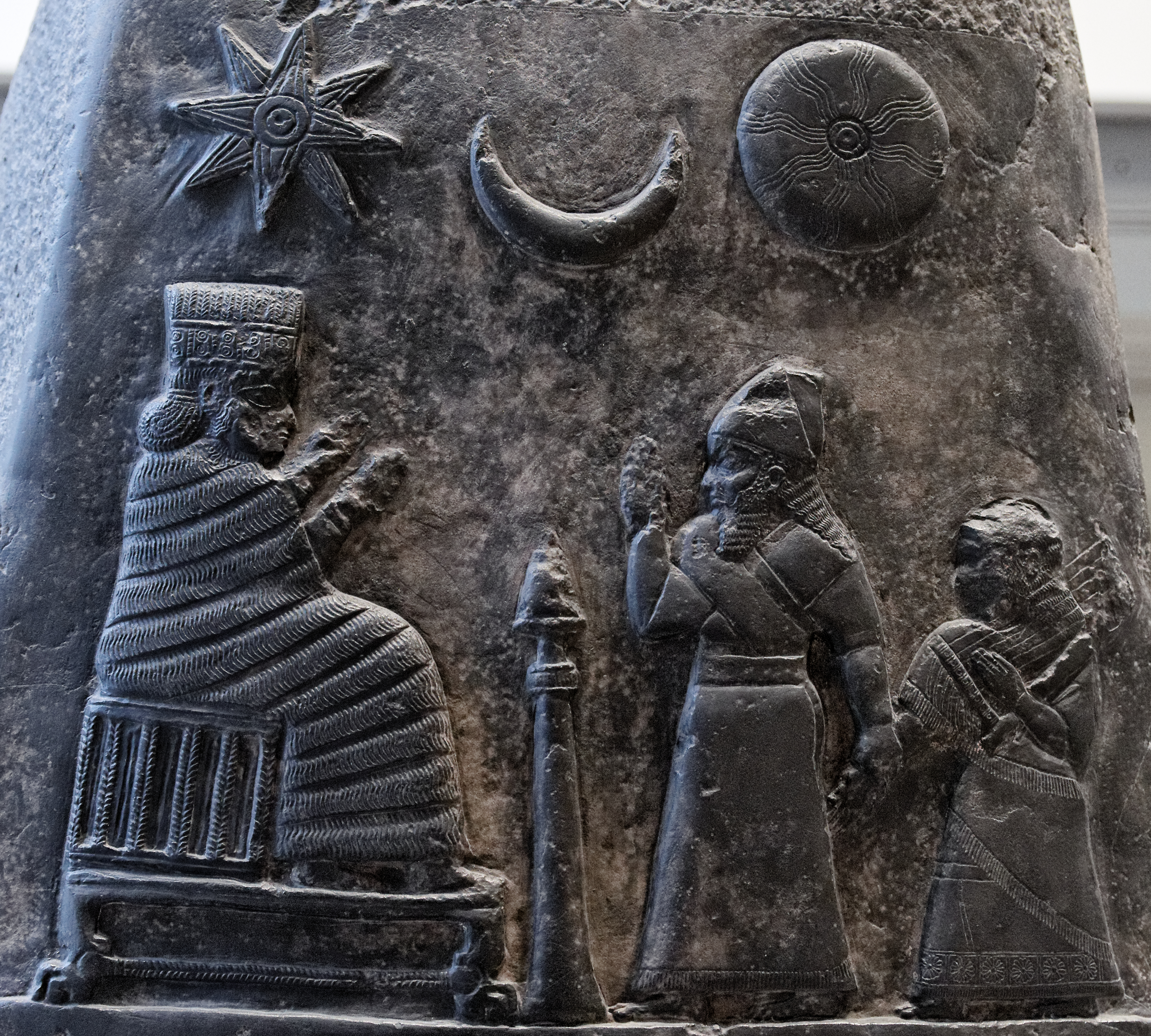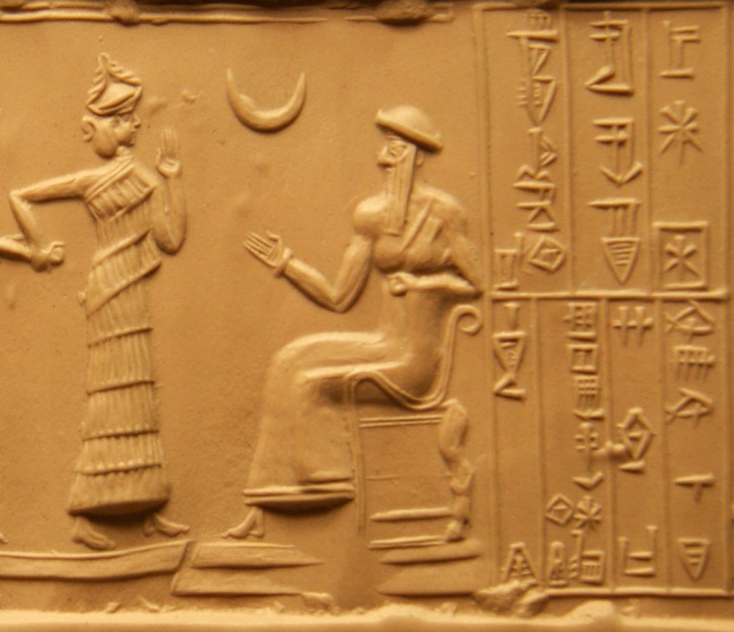|
Ziggurats
A ziggurat (; Cuneiform: 𒅆𒂍𒉪, Akkadian (language), Akkadian: ', D-stem of ' 'to protrude, to build high', cognate with other Semitic languages like Hebrew ''zaqar'' (זָקַר) 'protrude'), (Persian language, Persian: Chogha Zanbilچغازنجبیل) is a type of massive structure built in ancient Mesopotamia. It has the form of a terraced compound of successively receding stories or levels. Notable ziggurats include the Great Ziggurat of Ur near Nasiriyah, the Ziggurat of Aqar Quf near Baghdad, the no longer extant Etemenanki in Babylon, Chogha Zanbil in Khūzestān and Sialk. The Sumerians believed that the gods lived in the temple at the top of the ziggurats, so only priests and other highly-respected individuals could enter. Sumerian society offered these individuals such gifts as music, harvested produce, and the creation of devotional statues to entice them to live in the temple. History The word ziggurat comes from ''ziqqurratum'' (height, pinnacle), in ancient As ... [...More Info...] [...Related Items...] OR: [Wikipedia] [Google] [Baidu] |
Sumerians
Sumer () is the earliest known civilization, located in the historical region of southern Mesopotamia (now south-central Iraq), emerging during the Chalcolithic and early Bronze Ages between the sixth and fifth millennium BC. Like nearby Elam, it is one of the cradles of civilization, along with Egypt, the Indus Valley, the Erligang culture of the Yellow River valley, Caral-Supe, and Mesoamerica. Living along the valleys of the Tigris and Euphrates rivers, Sumerian farmers grew an abundance of grain and other crops, a surplus of which enabled them to form urban settlements. The world's earliest known texts come from the Sumerian cities of Uruk and Jemdet Nasr, and date to between , following a period of proto-writing . Name The term "Sumer" () comes from the Akkadian name for the "Sumerians", the ancient non- Semitic-speaking inhabitants of southern Mesopotamia.Piotr Michalowski, "Sumerian," ''The Cambridge Encyclopedia of the World's Ancient Languages." Ed. Roger D. Woo ... [...More Info...] [...Related Items...] OR: [Wikipedia] [Google] [Baidu] |
Great Ziggurat Of Ur
The Ziggurat (or Great Ziggurat) of Ur ( Sumerian: "Etemenniguru", meaning "house whose foundation creates terror") is a Neo-Sumerian ziggurat in what was the city of Ur near Nasiriyah, in present-day Dhi Qar Province, Iraq. The structure was built during the Early Bronze Age (21st century BC) but had crumbled to ruins by the 6th century BC of the Neo-Babylonian period, when it was restored by King Nabonidus. Its remains were excavated in the 1920s and 1930s by international teams led by Sir Leonard Woolley. Under Saddam Hussein in the 1980s, they were encased by a partial reconstruction of the façade and the monumental staircase. The Ziggurat of Ur is the best-preserved of those known from Mesopotamia, besides the ziggurat of Dur Untash (Chogha Zanbil). It is one of three well-preserved structures of the Neo-Sumerian city of Ur, along with the Royal Mausolea and the Palace of Ur-Nammu (the ''E-hursag''). Sumerian ziggurat The ziggurat was built by King Ur-Nammu, who dedi ... [...More Info...] [...Related Items...] OR: [Wikipedia] [Google] [Baidu] |
Ur-Nammu
Ur-Nammu (or Ur-Namma, Ur-Engur, Ur-Gur, Sumerian language, Sumerian: ; died 2094 BC) founded the Sumerian Third Dynasty of Ur, in southern Mesopotamia, following several centuries of Akkadian Empire, Akkadian and Gutian period, Gutian rule. Though he built many temples and canals his main achievement was building the core of the Ur III Empire via military conquest, and Ur-Nammu is chiefly remembered today for his legal code, the Code of Ur-Nammu, the oldest known surviving example in the world. He held the titles of "King of Ur, and King of Sumer and Akkad". His personal goddess was Ninsuna. Reign According to the ''Sumerian King List'', Ur-Nammu reigned for 18 years. Year-names are known for 17 of these years, but their order is uncertain. One year-name of his reign records the devastation of Gutium, while two years seem to commemorate his legal reforms ("Year in which Ur-Nammu the king put in order the ways [of the people in the country] from below to above", "Year Ur-Nammu ... [...More Info...] [...Related Items...] OR: [Wikipedia] [Google] [Baidu] |
Sumer
Sumer () is the earliest known civilization, located in the historical region of southern Mesopotamia (now south-central Iraq), emerging during the Chalcolithic and Early Bronze Age, early Bronze Ages between the sixth and fifth millennium BC. Like nearby Elam, it is one of the Cradle of civilization, cradles of civilization, along with ancient Egypt, Egypt, the Indus Valley Civilisation, Indus Valley, the Erligang culture of the Yellow River valley, Caral-Supe civilization, Caral-Supe, and Mesoamerica. Living along the valleys of the Tigris and Euphrates rivers, Sumerian farmers grew an abundance of grain and other crops, a surplus of which enabled them to form urban settlements. The world's earliest known texts come from the Sumerian cities of Uruk and Jemdet Nasr, and date to between , following a period of proto-writing . Name The term "Sumer" () comes from the Akkadian Empire, Akkadian name for the "Sumerians", the ancient non-Semitic languages, Semitic-speaking inhabitan ... [...More Info...] [...Related Items...] OR: [Wikipedia] [Google] [Baidu] |
Ziggurat Of Ur
The Ziggurat (or Great Ziggurat) of Ur ( Sumerian: "Etemenniguru", meaning "house whose foundation creates terror") is a Neo-Sumerian ziggurat in what was the city of Ur near Nasiriyah, in present-day Dhi Qar Province, Iraq. The structure was built during the Early Bronze Age (21st century BC) but had crumbled to ruins by the 6th century BC of the Neo-Babylonian period, when it was restored by King Nabonidus. Its remains were excavated in the 1920s and 1930s by international teams led by Sir Leonard Woolley. Under Saddam Hussein in the 1980s, they were encased by a partial reconstruction of the façade and the monumental staircase. The Ziggurat of Ur is the best-preserved of those known from Mesopotamia, besides the ziggurat of Dur Untash ( Chogha Zanbil). It is one of three well-preserved structures of the Neo-Sumerian city of Ur, along with the Royal Mausolea and the Palace of Ur-Nammu (the ''E-hursag''). Sumerian ziggurat The ziggurat was built by King Ur-Nammu, w ... [...More Info...] [...Related Items...] OR: [Wikipedia] [Google] [Baidu] |
Neo-Sumerian
The Third Dynasty of Ur or Ur III was a Sumerian dynasty based in the city of Ur in the 22nd and 21st centuries BC (middle chronology). For a short period they were the preeminent power in Mesopotamia and their realm is sometimes referred to by historians as the Neo-Sumerian Empire. The Third Dynasty of Ur is commonly abbreviated as "Ur III" by historians studying the period. It is numbered in reference to previous dynasties, such as the First Dynasty of Ur (26-25th century BC), but it seems the once supposed Second Dynasty of Ur was never recorded. The Third Dynasty of Ur was the last Sumerian dynasty which came to preeminent power in Mesopotamia. It began after several centuries of control, exerted first by the Akkadian Empire, and then, after its fall, by Gutian and independent Sumerian city-state kings. It controlled the cities of Isin, Larsa, and Eshnunna and extended as far north as Upper Mesopotamia. The Ur III provinces, from north to south were Sippar, Tiwe, Urum, Pu ... [...More Info...] [...Related Items...] OR: [Wikipedia] [Google] [Baidu] |
Sin (mythology)
Sin () or Suen (, ) also known as Nanna ( ) is the Mesopotamian god representing the moon. While these two names originate in two different languages, respectively Akkadian language, Akkadian and Sumerian language, Sumerian, they were already used interchangeably to refer to one deity in the Early Dynastic Period (Mesopotamia), Early Dynastic period. They were sometimes combined into the double name Nanna-Suen. A third well attested name is Dilimbabbar (). Additionally, the name of the moon god could be represented by logograms reflecting his lunar character, such as d30 (), referring to days in the lunar month or dU4.SAKAR (), derived from a term referring to the crescent. In addition to his astral role, Sin was also closely associated with cattle herding. Furthermore, there is some evidence that he could serve as a judge of the dead in the Ancient Mesopotamian underworld, underworld. A distinct tradition in which he was regarded either as a god of equal status as the usual hea ... [...More Info...] [...Related Items...] OR: [Wikipedia] [Google] [Baidu] |
Third Dynasty Of Ur
The Third Dynasty of Ur or Ur III was a Sumerian dynasty based in the city of Ur in the 22nd and 21st centuries BC ( middle chronology). For a short period they were the preeminent power in Mesopotamia and their realm is sometimes referred to by historians as the Neo-Sumerian Empire. The Third Dynasty of Ur is commonly abbreviated as "Ur III" by historians studying the period. It is numbered in reference to previous dynasties, such as the First Dynasty of Ur (26-25th century BC), but it seems the once supposed Second Dynasty of Ur was never recorded. The Third Dynasty of Ur was the last Sumerian dynasty which came to preeminent power in Mesopotamia. It began after several centuries of control, exerted first by the Akkadian Empire, and then, after its fall, by Gutian and independent Sumerian city-state kings. It controlled the cities of Isin, Larsa, and Eshnunna and extended as far north as Upper Mesopotamia. The Ur III provinces, from north to south were Sippar, Tiwe, Urum, ... [...More Info...] [...Related Items...] OR: [Wikipedia] [Google] [Baidu] |
British Museum
The British Museum is a Museum, public museum dedicated to human history, art and culture located in the Bloomsbury area of London. Its permanent collection of eight million works is the largest in the world. It documents the story of human culture from its beginnings to the present.Among the national museums in London, sculpture and decorative art, decorative and applied art are in the Victoria and Albert Museum; the British Museum houses earlier art, non-Western art, prints and drawings. The National Gallery holds the national collection of Western European art to about 1900, while art of the 20th century on is at Tate Modern. Tate Britain holds British Art from 1500 onwards. Books, manuscripts and many works on paper are in the British Library. There are significant overlaps between the coverage of the various collections. Established in 1753, the British Museum was the first public national museum. In 2023, the museum received 5,820,860 visitors, 42% more than the previous y ... [...More Info...] [...Related Items...] OR: [Wikipedia] [Google] [Baidu] |
Uruk
Uruk, the archeological site known today as Warka, was an ancient city in the Near East, located east of the current bed of the Euphrates River, on an ancient, now-dried channel of the river in Muthanna Governorate, Iraq. The site lies 93 kilometers (58 miles) northwest of ancient Ur, 108 kilometers (67 miles) southeast of ancient Nippur, and 24 kilometers (15 miles) northwest of ancient Larsa. It is east of modern Samawah. Uruk is the type site for the Uruk period. Uruk played a leading role in the early urbanization of Sumer in the mid-4th millennium BC. By the final phase of the Uruk period around 3100 BC, the city may have had 40,000 residents, with 80,000–90,000 people living in its environs, making it the largest urban area in the world at the time. Gilgamesh, according to the chronology presented in the '' Sumerian King List'' (''SKL''), ruled Uruk in the 27th century BC. After the end of the Early Dynastic period, with the rise of the Akkadian Empire, the ci ... [...More Info...] [...Related Items...] OR: [Wikipedia] [Google] [Baidu] |
Ancient Ziggurat At Ali Air Base Iraq 2005
Ancient history is a time period from the beginning of writing and recorded human history through late antiquity. The span of recorded history is roughly 5,000 years, beginning with the development of Sumerian cuneiform script. Ancient history covers all continents inhabited by humans in the period 3000 BCAD 500, ending with the expansion of Islam in late antiquity. The three-age system periodises ancient history into the Stone Age, the Bronze Age, and the Iron Age, with recorded history generally considered to begin with the Bronze Age. The start and end of the three ages vary between world regions. In many regions the Bronze Age is generally considered to begin a few centuries prior to 3000 BC, while the end of the Iron Age varies from the early first millennium BC in some regions to the late first millennium AD in others. During the time period of ancient history, the world population was exponentially increasing due to the Neolithic Revolution, which was in full prog ... [...More Info...] [...Related Items...] OR: [Wikipedia] [Google] [Baidu] |
Akkadian Empire
The Akkadian Empire () was the first known empire, succeeding the long-lived city-states of Sumer. Centered on the city of Akkad (city), Akkad ( or ) and its surrounding region, the empire united Akkadian language, Akkadian and Sumerian language, Sumerian speakers under one rule and exercised significant influence across Mesopotamia, the Levant, and Anatolia, sending military expeditions as far south as Dilmun and Magan (civilization), Magan (modern United Arab Emirates, Saudi Arabia, Bahrain, Qatar and Oman) in the Arabian Peninsula.Mish, Frederick C., Editor in Chief. "Akkad" ''iarchive:webstersninthne000merr, Webster's Ninth New Collegiate Dictionary''. ninth ed. Springfield, MA: Merriam-Webster 1985. ). The Akkadian Empire reached its political peak between the 24th and 22nd centuries BC, following the conquests by its founder Sargon of Akkad. Under Sargon and his successors, the Akkadian language was briefly imposed on neighboring conquered states such as Elam and Guti ... [...More Info...] [...Related Items...] OR: [Wikipedia] [Google] [Baidu] |








